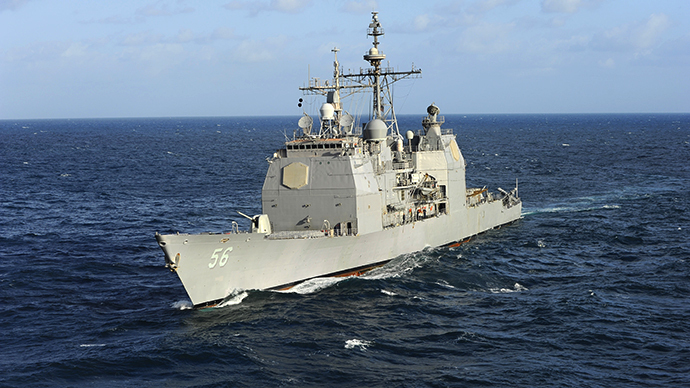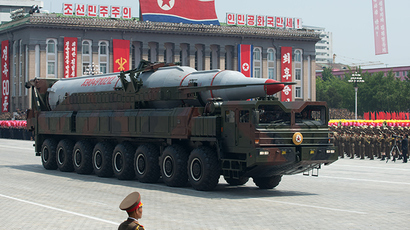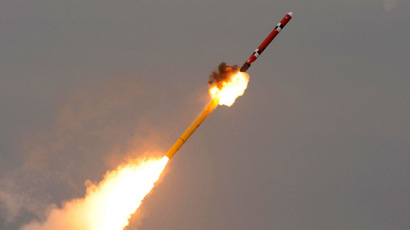US to boost naval presence in Asia-Pacific, citing N. Korea threat

The US will send two more missile defense system destroyers to Japan by 2017, Defense Secretary Chuck Hagel said, adding that the decision was related to North Korea’s recent missile launches.
"In response to Pyongyang's pattern of provocative and destabilizing actions, I can announce today that the US is planning to forward-deploy two additional AEGIS ballistic missile defense ships to Japan," Hagel said during a news conference at Japan's defense ministry on Sunday.
The US already has five missile defense capable ships in the area.
"This move to significantly bolster our naval presence is another action that strengthens our alliance and increases deterrence against North Korean aggression," Hagel said.
Tensions in the region have been rising, as North Korea launched the Rodong missiles last Saturday that stopped halfway in their maximum range of around 1,300km, before plummeting into the sea after a 640km flight.
Pyongyang’s move came just as US President Barack Obama was meeting with South Korean and Japanese officials in The Hague to discuss earlier short-range launches by North Korea. In late March, Pyongyang fired 30 missiles into the Sea of Japan – the second time in a week, while neighboring South Korea was engaged in military drills with the United States.
That had been North Korea’s longest-range missile test since December 2012 and the first time a Rodong missile had been tested since 2009.
Concerning the joint US-South Korea war games, Washington and Seoul conduct such exercises annually, while Pyongyang protests them, saying the accompanying build-up of troops is a threat to its national security.
On Friday, Japan Defense Minister Itsunori Onodera ordered the military to intercept and destroy any North Korean missiles appearing on Japan’s territory, the country’s Kyodo News reported.
Things escalated even further when North Korea balked at offering details of a “new form” of nuclear test it threatened to launch. This followed condemnation by the United Nations Security Council of Pyongyang’s recent ballistic missile exercise.
The UN Security Council slammed the exercise the next day, on March 27, calling it a violation of UN resolutions. The international body said it was considering an “appropriate response,” according to Reuters.
Then on Sunday, Pyongyang countered with a threat to conduct “a new form of nuclear test.”
Hagel’s decision follows his other attempts at boosting security presence in the region. Last year a plan to position a second X-band missile defense radar in Japan was approved. It is expected to be completed this year. Ground-based missile defenses were also increased in Alaska.














